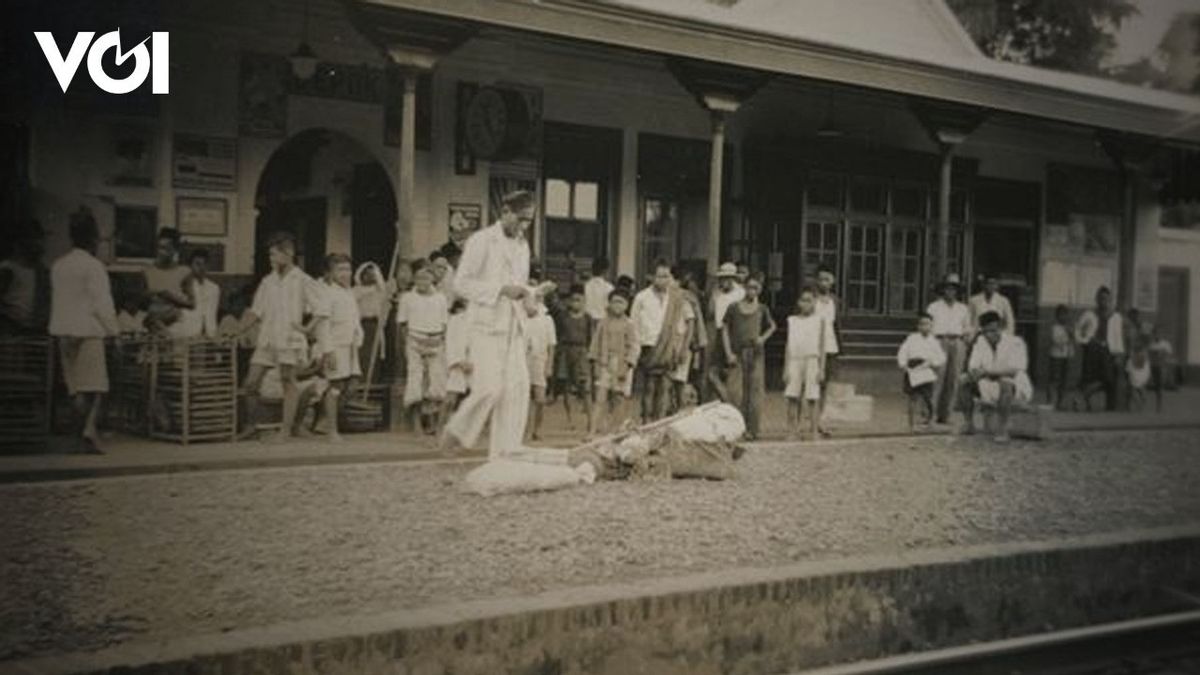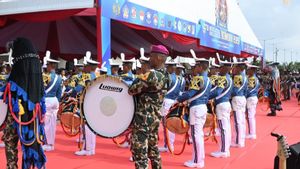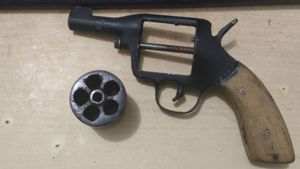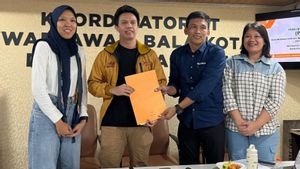JAKARTA - One of the most famous dark events during the Bersiap period was the Gedoran Depok tragedy. The nationalism of the post-independence society led to a "clean-up" of anything colonial. The Dutch and their alleged accomplices were eradicated. Including indigenous people who earned the nickname Dutch Depok.
The term Dutch Depok is widely heard in everyday life. Usually, this designation is intended for a group of Depok people who have a Dutch clan.
But that group of people was neither white nor sharp-nosed. Like the typical Caucasoid race that characterizes Europeans.
They are indigenous descendants who are related to the colonialism era in the past. Historian, JJ Rizal, said that the majority of them were slaves from Bali, Sulawesi, and the East. They were brought in by the wealthy merchant, Cornelis Chastelein, in the 17th century, and were later freed.
"Then they were given European names, educated in Europe, adhering to European religions. But they have a close relationship with indigenous people," Rizal said in an interview with tvOne.
Different Fate
Cornelis Chastelein, a senior reserve from Batavia fort, was expanding his agricultural area at that time. He bought land in Depok covering an area of 1,240 hectares.
To work on the land, Cornelis also bought 150 slaves, most of whom came from Bali and South Sulawesi. Cornelis divided the slaves into 12 Dutch clans.
Unlike most slaves who lived in misery, Cornelis's slaves lived in prosperity. They live comfortably. Their life became more prosperous after their master Cornelis died on June 28, 1714. The deceased left a will that said he would free all his slaves and donate his land in Depok to them.
For years of living in a Dutch cultural environment, the former slaves embraced the Dutch lifestyle. And of course, spoke Dutch fluently. That was the origin of the Dutch Depok nickname.
The region was so stable that Depok had its government. The order for the Depok government at that time was arranged by Dutch advocates with a republican arrangement with its first president, G. Jonathans, and MF Jonathans as secretaries.
The President was elected based on a majority vote every 3 years. The Depok Presidential Palace stands firmly until now, namely an old house on Jl Pemuda, Pancoran Mas, Depok.
However, the Dutch defeated by the Japanese, and it made the Depok government weaker. All of Depok's produce was taken by Japan. Even so, the rights of Depok residents to carry out European cultural traditions weren't prohibited.
Turning Point
During the Japanese colonial period, the Depok area was arguably the safest. Almost no physical clashes in the city.
The situation changed when Sukarno proclaimed independence. The nationalist spirit was boiled in almost every soul of the Indonesian people. They carried out "cleaning" in every region of the archipelago, including Depok.
According to Wenri Wanhar in his book Gedoran Depok: Revolusi Sosial di Tepi Jakarta 1945-1955 on October 7, 1945, riots took place in Depok. Residents boycotted every Europeans, including those who were considered to be Dutch accomplices. The Dutch Depok was no exception.
They prevented Europeans from buying their daily needs. The Laskar for independence wanted to paralyze the economic activity of the Dutch people and their accomplices.
Youth armies were formed. The defection of PETA members in Depok gave birth to the Indonesian Youth Force (AMRI) under the leadership of Margonda, Laskar 21 under the leadership of Tole Iskandar, and Regional Defense under the leadership of Nisin Manyir and many other figures. Some of them are used as street names in Depok today.
The rebellion was growing. On October 8, 1945, a group of people armed with bamboo spikes robbed five families who were considered to be Dutch accomplices. They plundered all of their wealth.
Besides, the cooperative's warehouses, where the food was stored, were looted by a group of homeless people. Then on October 11, about 4000 people came to Depok. The entourage robbed and destroyed the houses and evicted the occupants, especially European Christians.
The trauma remains
One of the living witnesses, Opa Yoti, said that "the incident was a bit similar to the 1998 riots. In which many shops displayed the words ' belong to indigenous people'. When the Depok Gedoran erupted, some Depok people secured themselves in their barking house or took shelter in the villagers' houses outside Depok.
Riots everywhere, but the Indonesian government police didn't budge. They can only watch the violence happen.
The impact of the Gedoran Depok incident was even felt several years later. Almost all who experienced the incident felt traumatized.
Another victim who went through the traumatic experience was Dolf Jonathans. He saw with his own eyes when hundreds of armed youths entered Kerkstraat, which is now called Jalan Pemuda, Depok.
Dolf's residence is only about 100 meters from the Kerkstraat junction. "We saw armed men entered the yard. They were banging on the doors in anger," said Dolf as quoted by Detik.
They then fled through the back door. They hide in the forest. Only after things got quiet, they returned home. "All the goods had been stolen. There was only red bean soup left on the table," said Dolf.
Those who tried to fight the armed men were either beheaded or taken to Paledang Prison in Bogor for men. Meanwhile, women and children under the age of 13 were housed in the Gemeente Bestuur Building.
Dolf admitted that he was finally imprisoned in Paledang for 10 days. Meanwhile, those detained at Gemeente Bestuur were only released after the British arrived.
According to the Management of the Cornelis Chastelein Foundation (YLCC), Ferdy Jonatahans, the October 1945 incident caused deep trauma for the members of the 12 clan community. Therefore, almost all community members who experienced this incident were reluctant to tell stories.
But for him, this incident must be straightened out. Because so far, stories from community members tend to be marginalized. "We are not traitors. We were victims at that time," he concluded.
The English, Chinese, Japanese, Arabic, and French versions are automatically generated by the AI. So there may still be inaccuracies in translating, please always see Indonesian as our main language. (system supported by DigitalSiber.id)












